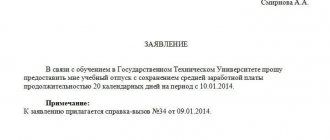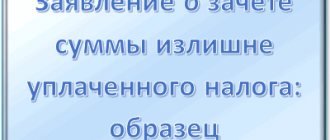Why are they not answering your letter? Errors in writing
The recipient may have many reasons for leaving your letter unanswered. There is no need to immediately suspect him of hostility or unwillingness to communicate.
It may be more convenient for him to contact you by phone or talk in person. Or he took note of your letter, considering that a response was not needed. Sometimes people do not respond to a letter immediately, but wait until the correspondence accumulates. After all, it is easier to respond to several messages than to send one at a time.
But if your letters remain unanswered more and more often, there is reason to think. What mistakes do people make when writing messages?
- Mistakes in the literal sense. Grammatical. You may be missing a lot of punctuation, making your sentences unreadable. Remember the famous phrase “execution cannot be pardoned.” It is completely unclear what the author wanted to say. At the same time, spelling errors can change words beyond recognition. Reading a letter with errors takes much more effort and time. In our dynamic world, it is easier to discard a “defective” letter than to correct it
- Your email looks like spam. This happens when you forget about the addressee and write to some “average” interlocutor. Such a letter does not contain any address by name or individual questions. And it’s not customary to respond to a faceless mailing list.
- You cannot isolate the main thing. The topic may get lost among the details and small details. Perhaps the person read your letter, but still did not understand what you want from him
How to write a letter correctly to always receive an answer: tips and reviews
Most letters have the same structure. If you master the technique of composing messages in accordance with it, the letters will be easy to read. This means that the answer will not take long to arrive. This is the structure.
- Greetings. The phrase “Good day!” is a very common phrase on the Internet. It is acceptable in both personal and business correspondence. Mention the name of the person you are talking to. This way he will know that he is not part of a large mailing list, and the letter is intended for him personally
- Performance. Don't forget to write not only your name, but also something that will help your interlocutor identify you. “This is Mary” - such a phrase will not tell a person anything. “This is Maria Ivanova from the next office. We took a taxi together last Friday” - and your recipient already definitely remembered you
- Main part. Try to be brief. If it's a personal letter, you can add a couple of jokes or references that are relevant. Don't use long sentences. You will easily get confused with punctuation, and your interlocutor will get tired of reading. Use questions more often
- Instead of writing: “Send me photos from the corporate event,” use the phrase: “When can you send me the photos?” Now your interlocutor has an incentive to write to you too, because leaving a question unanswered is indecent. Don't overuse introductory words
- "Lyrics". Now you can discuss issues indirectly related to the topic. These could be routine questions: how is your mother doing? How do you like this weather for the beginning of spring? Or general memories and experiences: have you already seen the boss’s new tie? you don’t know when they will replace our broken cooler
- Parting. Before you put an end to it, don’t forget to add a phrase like “thanks in advance for your answer”
- End the letter with your contact information. Don't limit yourself to email and address. Perhaps the person will want to call you back or write an SMS
How to end a business letter in difficult situations
Difficult ones include cases when the sender is interested in what the recipient will answer (“yes” or “no”), but there is no way to ask directly. There are situations when a request to indicate exact deadlines or make a final decision seems premature, intrusive or incorrect (for example, if we are talking about offering any services). How, in this case, not to lose the thread of dialogue in correspondence?
A technique that indicates a subsequent action - one that will occur after the addressee responds to the letter - can come to the rescue. This way the sender does not seem too intrusive, but at the same time gets the opportunity to outline further prospects. The following are examples of such phrases:
Mikhail Vladimirovich, let us know how interested you are in this proposal, and we will immediately agree on all the details of cooperation.
Write about your decision and we will begin drawing up the contract.
Immediately after receiving a response message, I will send an adjusted payment schedule.
Write which of the options offered by our company suits you best, and we will send detailed information.
Respect is the key to a trusting relationship
Sometimes people don't respond to a letter because they feel like you didn't show enough respect. Everyone has their own criterion in this regard.
- errors. Illiteracy or sloppiness in the text can be considered disrespectful. There are people who, on principle, will not read a letter where there is no space after the comma or the dash is replaced with a hyphen
- lack of greeting or farewell
- other forms of politeness. If you have a request, follow it with the word “please”
To avoid becoming a victim of an embarrassing situation, be sure to re-read the letter after writing. At the same time, try to see it through the eyes of the addressee. Check not only errors, but also the address, subject, and the correctness of links and attachments. Make sure that the letter about the “boss’s new tie” doesn’t go to the boss himself.
If still there is no response
- Make sure your letter reaches its recipient. To do this, use other means of communication. If you received it, please clarify; maybe next time it would be better to contact you not by email, but through social networks or Skype
- When composing your next message, try to give the respondent some kind of deadline, that is, a specific date by which he must respond.
- Example: “Please send me the lecture schedule. Holidays end on Monday. I don't know what time I should go to university. You can do this until Friday
- And most importantly: make it a rule to answer letters addressed to you. This is taught by both etiquette and business rules. 10 minutes a day - and your correspondence will not accumulate
What should be reflected in the ending of a business letter
Active component.
It is necessary to clearly and substantively indicate what and how should be done or will be done in the near future. The active component of the finale aims the recipient of the message to quickly resolve the issue under discussion.
Image component.
It is necessary to create or consolidate a positive atmosphere of business communication. The image component of the final part of the message should demonstrate respect and loyalty towards the addressee. It forms the overall impression of the company. Depending on the context, you can use the following ready-made phrases:
- We will be glad to cooperate with you!
- We hope for fruitful cooperation!
- Please contact us if you have any questions . We will definitely answer!
- We will be glad to see you among our partners!
- If you have any questions, write or call. We will answer you in detail.
- We hope that our cooperation will be productive.
- Always ready to help and answer questions that arise.
- Sincerely…
- Have a nice day and good mood!
- Thank you for your cooperation!










